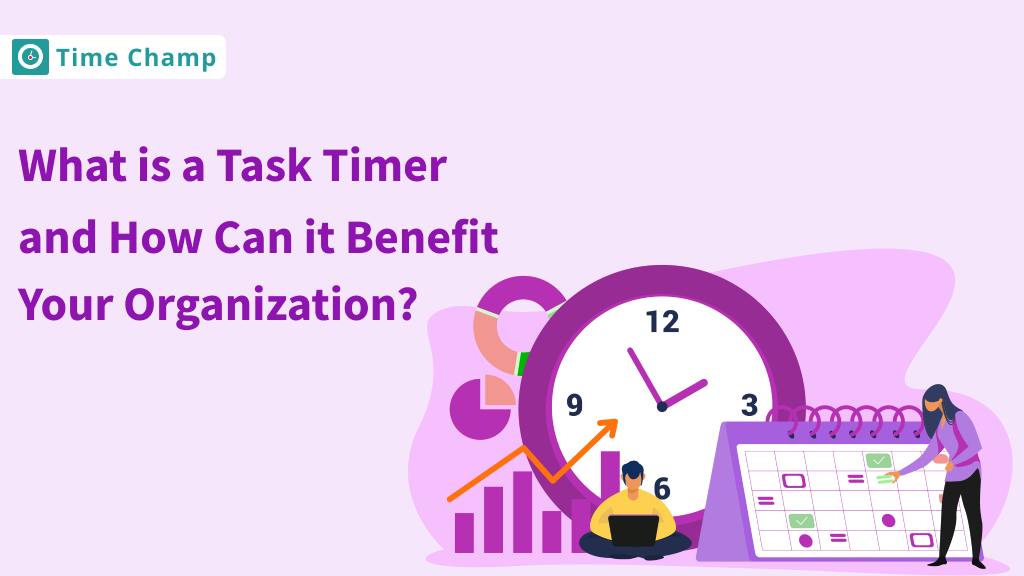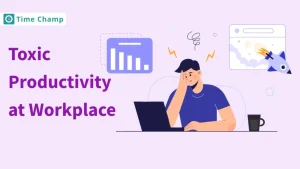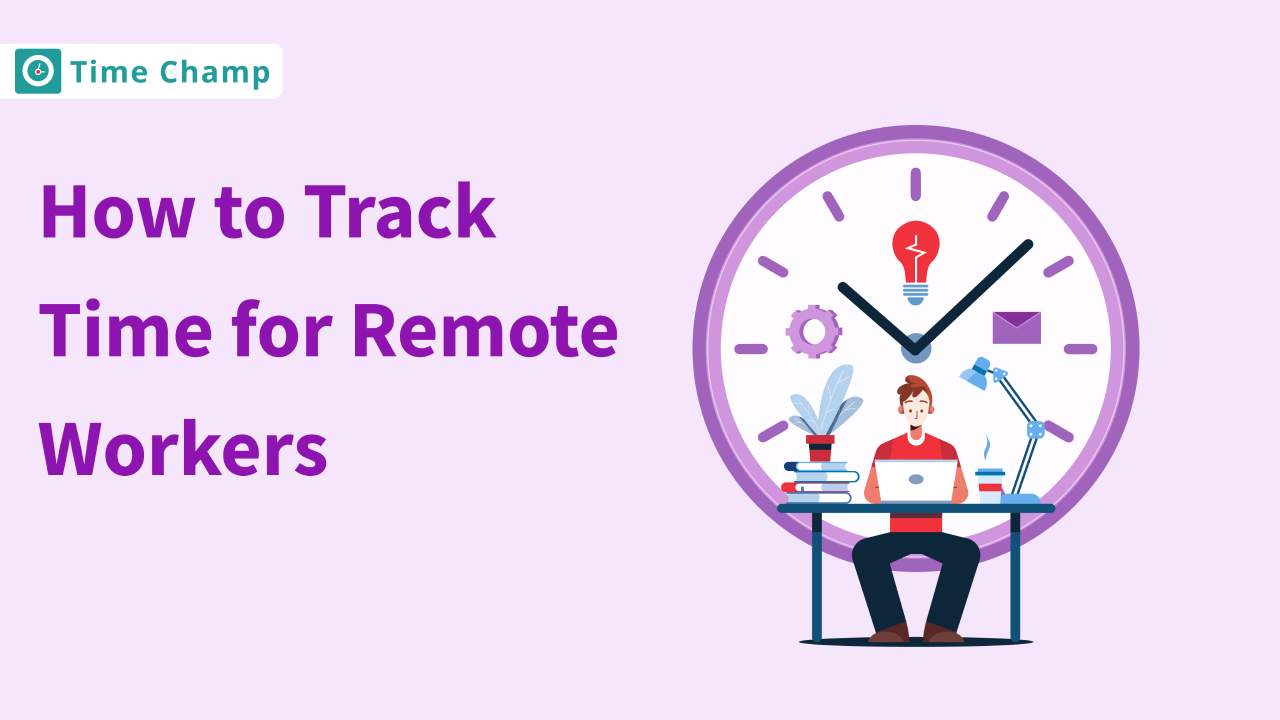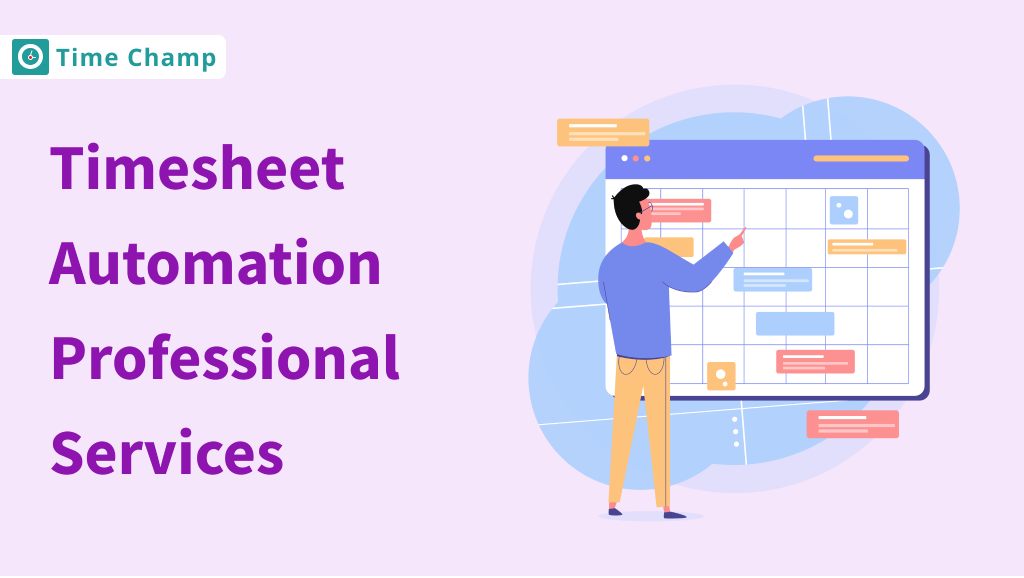Want to get more done and make your
employee’s workday smoother? A task
timer might be just what your
organization needs. By showing you
how much time staff spend on each
task, it helps to stay focused and
manage their schedule more
effectively.
In this blog,
we’ll explore how a task timer can
change the way you work, making
tasks easier to handle and boosting
productivity.
Let’s dive in!
What is a Task Timer?
A task timer is a digital tool that helps to see how much time employees spend on each task. By giving clear insights into their time usage, it makes it easier to plan schedules and manage their time better.
Why Should Organizations Use a Task Timer?
Task timers can be a game-changer for managing your employee’s time. They create a bit of urgency that keeps staff on track and prevents distractions. It is used to track how long they spend on different tasks, which helps you to see where employees are losing time and make adjustments. This way, they can plan their work better and make good use of time.
Task timers can really help with procrastination. They break work into smaller, more doable pieces, so it doesn’t seem as overwhelming. Plus, they give a clear picture of how employees are spending their time, which lets you make adjustments to work more efficiently. Many of them also prompt them to take breaks,>helping prevent burnout and keeping their energy levels up.
How a Task Timer Boosts Productivity?
When employees set a timer for a certain task, they are likely to work under urgency and avoid getting distracted. This approach divides work into segments and makes it easier to plan their time. Task timers also help achieve deep focus by allowing for extended periods of uninterrupted work, which is essential for effectively tackling complex tasks.
While these benefits apply to most task timers but, Time Champ’s Task Timer offers additional features that further enhance productivity:
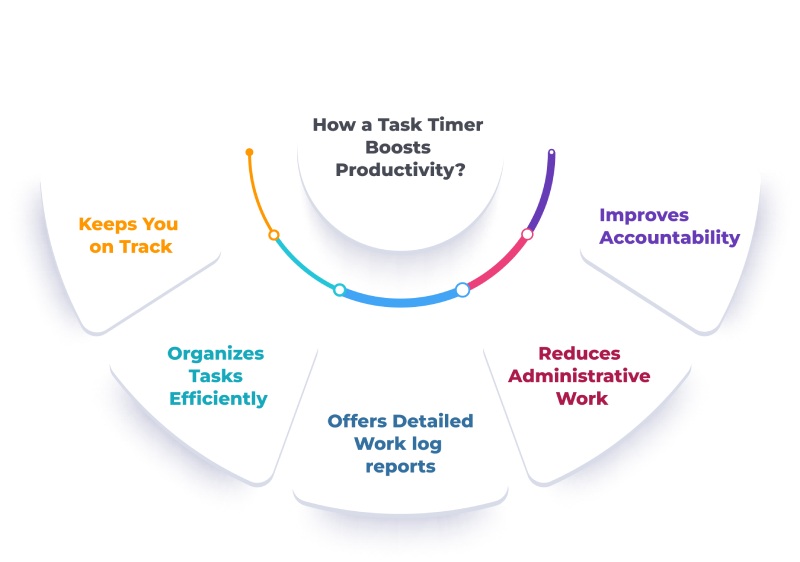
Keeps Employees on Track
Time Champ’s task timer lets
employees begin tracking
task time immediately and
allows them to input additional
information later. This way,
employees can easily switch from one
task to another without getting
distracted or losing the
flow.
For example, a developer
may switch between coding and
troubleshooting without the anxiety
of forgetting critical details.
Organizes Tasks Efficiently
Our task time tracker allows
employees to record the tasks
individually, which helps to avoid
spending too much time inputting
data. This efficiency allows to
spend less time dealing with logs
and more time on what is best
done.
For instance, a marketing
professional can record all the time
spent on brainstorming sessions,
client calls, and social media
campaigns separately, providing
clearer insights into how time is
spent. Besides saving time, this
organization allows teams to focus
more on the delivery of quality
results.
Offers Detailed Work log reports
Our online task time tracker helps
you understand how an
employee’s time is being spent
with detailed work log reports. This
way you can see patterns, manage
their time wisely, and ensure they
are completing important tasks.
For instance, if the manager
notices that team members are
spending an excessive amount of time
in meetings or on administrative
work, they might adjust workflows,
reallocate resources, or, if
necessary, offer further training.
Reduces Administrative Work
Using automated timesheets
and invoices also helps to minimize
the amount of time spent on
administrative work. This reduces
mistakes in payroll and billing,
which helps to focus on other
important tasks.
For example,
if the team logs hours spent on
multiple client projects, the
manager can quickly and accurately
generate an invoice, minimizing the
risk of billing problems. The
manager may spend more time helping
the team and making strategic
decisions due to this automation,
which also reduces the quantity of
time spent on administrative tasks.
Improves Accountability
Since the task
timer records the time spent
on tasks, it fosters
accountability.
This transparency assists in the evaluation
of performance,
keeping on track, and guaranteeing
that tasks are accomplished as
intended.
If a team member
consistently complains about not
being able to meet deadlines, for
instance, the manager can look at
the task time
logs to see where the time
is going and provide suggestions or
adjustments. Also, a clean record
helps with performance evaluation
during assessments. If an employee
exceeds their goals, for example,
data can support their achievements
and lead to recognition and future
career advancement.
Look at the benefits that a work timer brings to your table!
Physical vs. Digital Task Timers
Many people have doubts about whether
they should opt for a physical task
timer or opt for a digital task
timer.
Do you, too?
Then
why stay stuck in a
dilemma?
Let’s have a clear
look at the differences between
them!
| Feature | Physical Task Timer | Digital Task Timer |
|---|---|---|
|
Type
|
Manual
or
mechanical
timer
|
Software
or app
based
|
|
Portability
|
Generally
portable
but
maybe
bulkier
|
Highly
portable,
available
on
smartphones,
tablets,
etc
|
|
Customization
|
Limited
customization
options
|
Highly
customizable
with
various
features
and
settings
|
|
Ease of
use
|
Simple
and
intuitive,
no setup
required
|
May
require
setup
and
navigation
|
|
Integration
|
Not
designed
for
integration
|
Can
integrate
with
other
productivity
tools
|
|
Durability
|
Usually
durable
and
long-lasting
|
Dependent
on the
device’s
or
software’s
durability
|
|
Cost
|
One-time
purchase
costs
|
Can
range
from
free
apps to
paid
versions
or
subscriptions
|
|
Additional
features
|
Basic
time
tracking
|
Features
may
include
analytics,
reports,
goal-setting,
and
automatic
timesheet
generation.
|
Well, each type of timer has its
perks. Picking the one that works
best for your organization can help
to manage employees’ time and
productivity.
People often
prefer digital task timers over
manual timers because it makes
everything easier and more
streamlined.
Conclusion
Task timers help to improve productivity since they help in time management. Whether you use physical or digital task timers, each plays a unique role. Physical timers are easy to use and long-lasting, and digital timers offer more functionalities and compatibility with other tools. Depending on your organizational needs you can choose one between them. Regardless of which type you choose, using a task timer can help to organize the task and get things done.
Transform your task management with Time Champ!
Try our new task timer for better productivity. Try it today with 7 free trial!
Signup for FreeBook DemoFrequently Asked Questions
They are very digital as they can be used on mobiles, tablets, systems, etc. Digital task timers consist of features such as bulk edits, detailed reports, etc. This functionality makes work easier and provides detailed information about time usage.
Yes! With the help of a task timer, you can see how much time each team member spends on a particular task, what can be improved, and whether the task is done on time. Task timers also help to increase accountability and transparency within the team since everyone can track the time spent on tasks and whether the planned work is being done. This can result in improved project coordination and utilization of resources.
Task timers can be applied to different kinds of work, including large projects, teamwork, and individual work. They are especially helpful for activities that need constant attention or those that are time-sensitive. However, for the jobs with highly variable tasks or where flexibility is important, the task timers can still be used but in a different way as per the requirement.
To some people, if not well managed, it may seem like they are being monitored all the time or they feel pressured to perform. Also, if it is not incorporated well into your work, a task timer may end up being more of a hindrance than a benefit. However, it is crucial to ensure that the use of the timer does not add extra pressure while making the work more efficient.
When selecting a task timer, consider features that help to achieve your organizational objectives. Features that make the process convenient include adjustable time slots and good time display, compatibility with other applications, capacity to produce comprehensive reports, categorization of tasks, etc. Consider your requirements and choose a timer that fits your company’s working style and goals.
